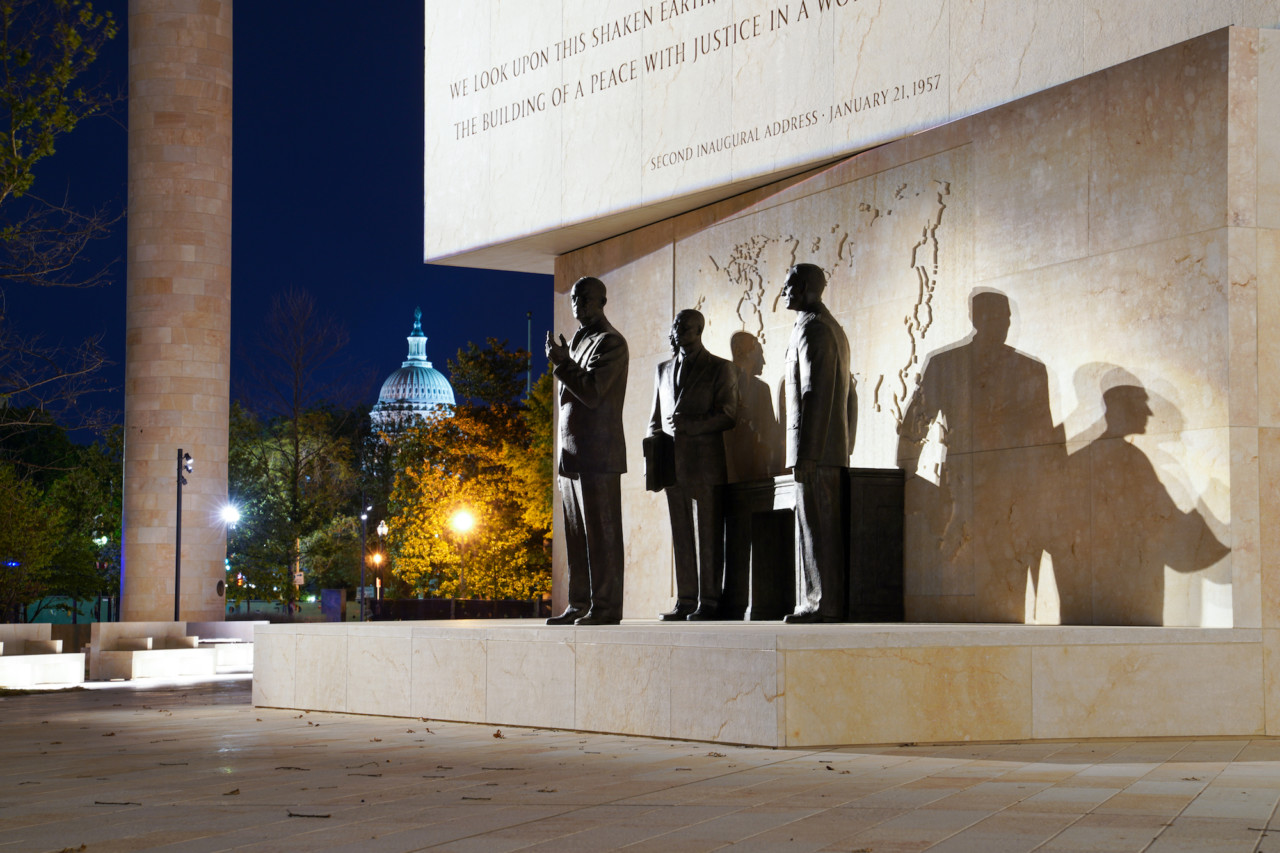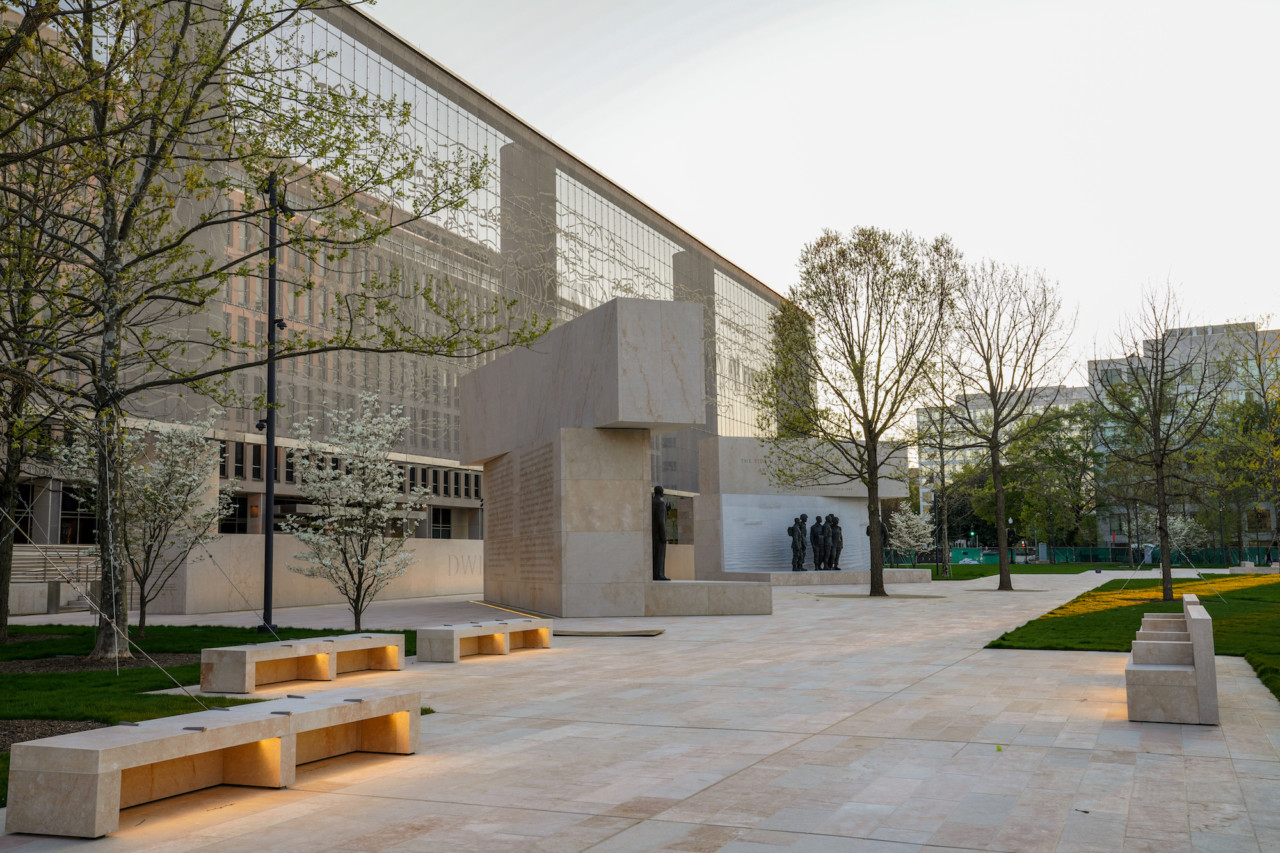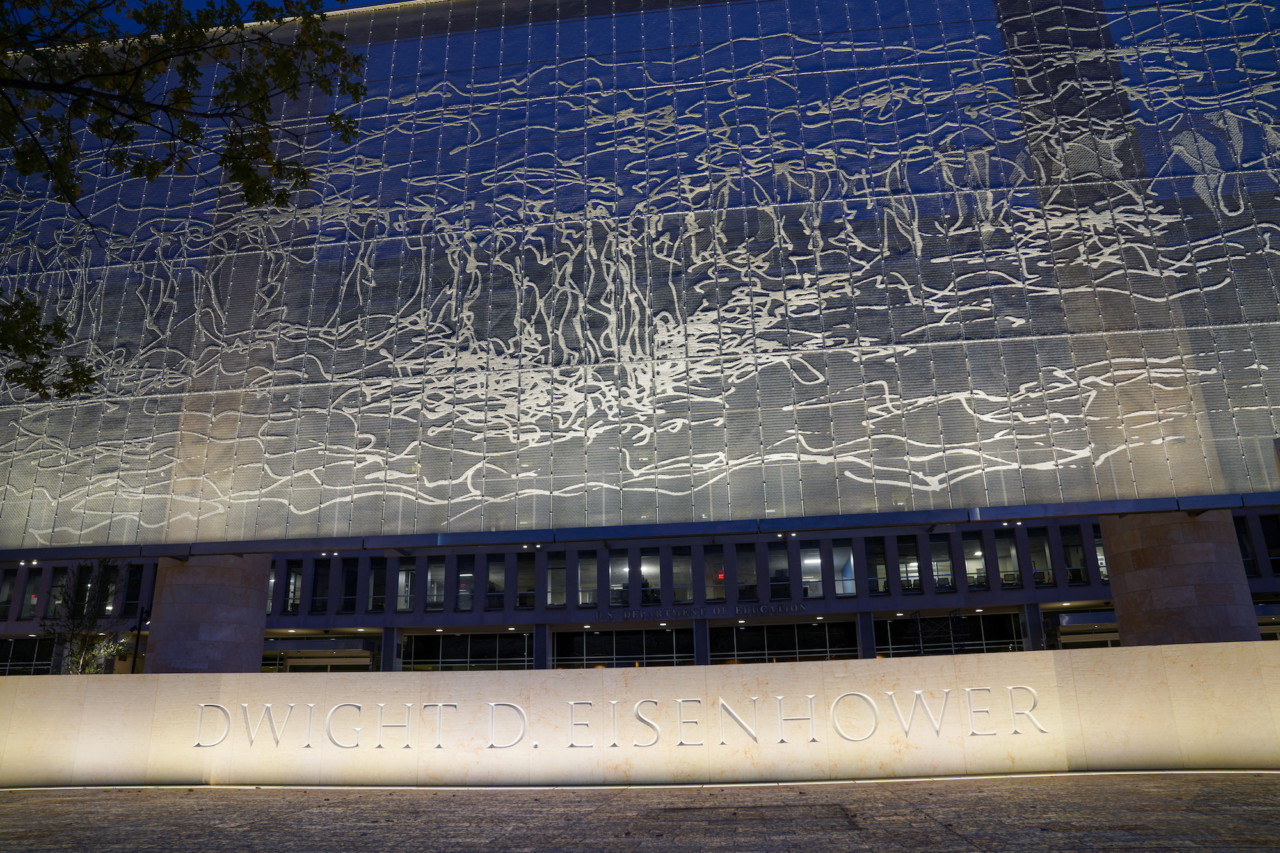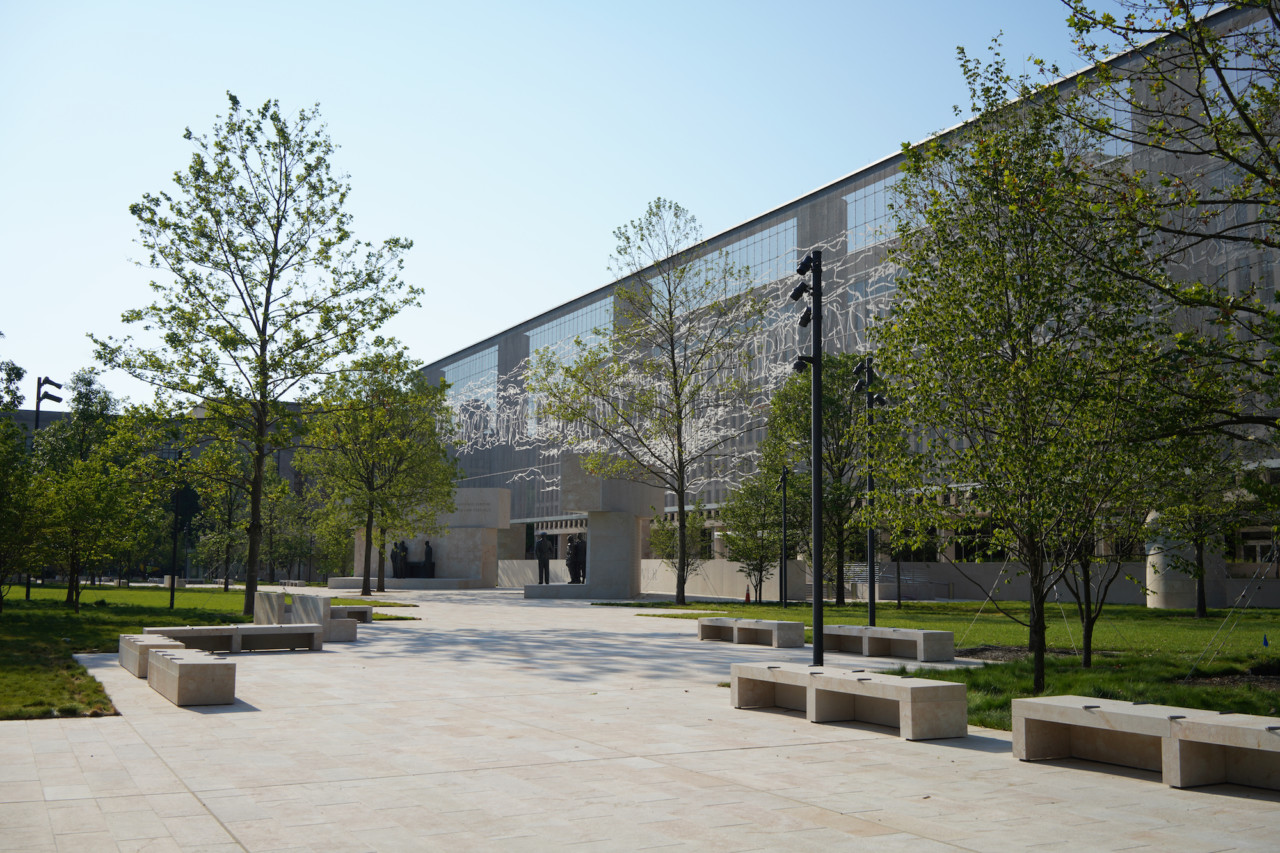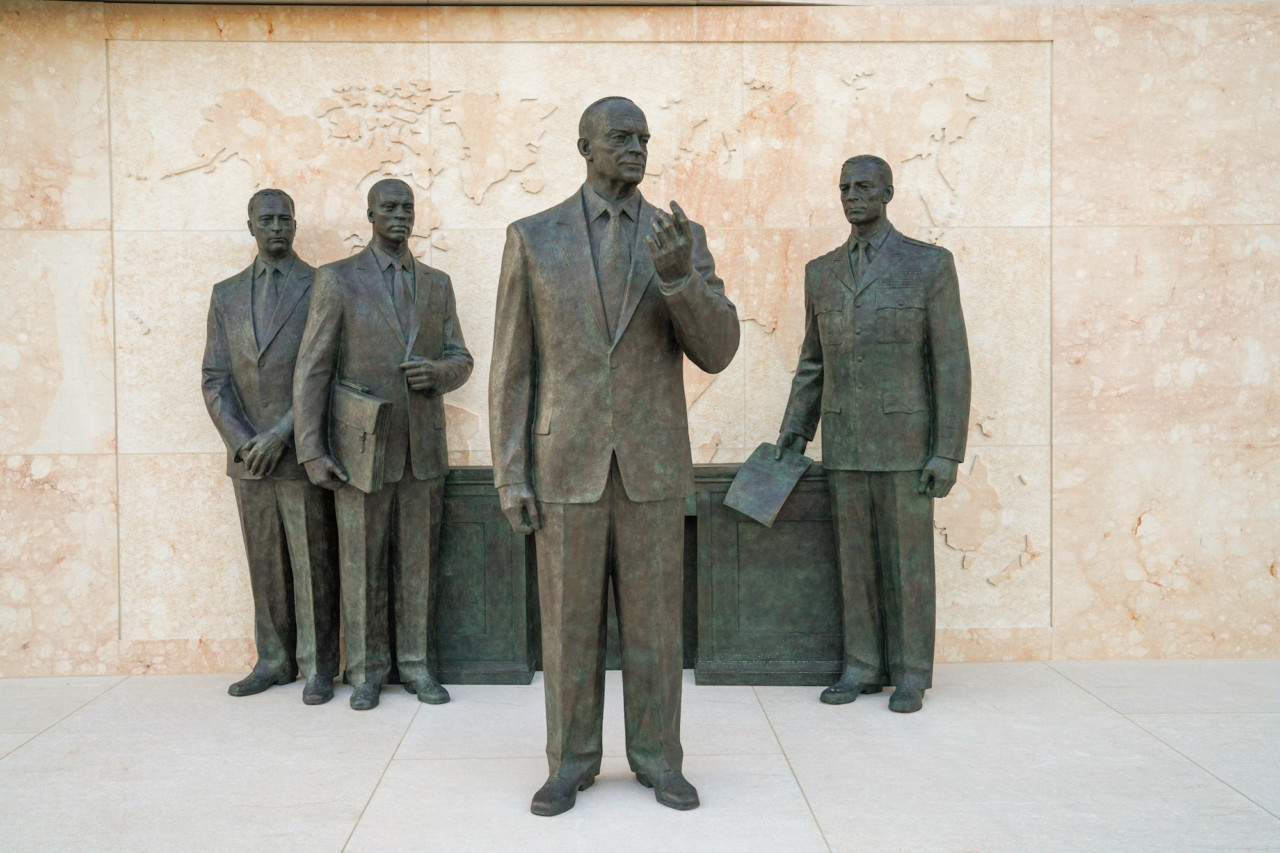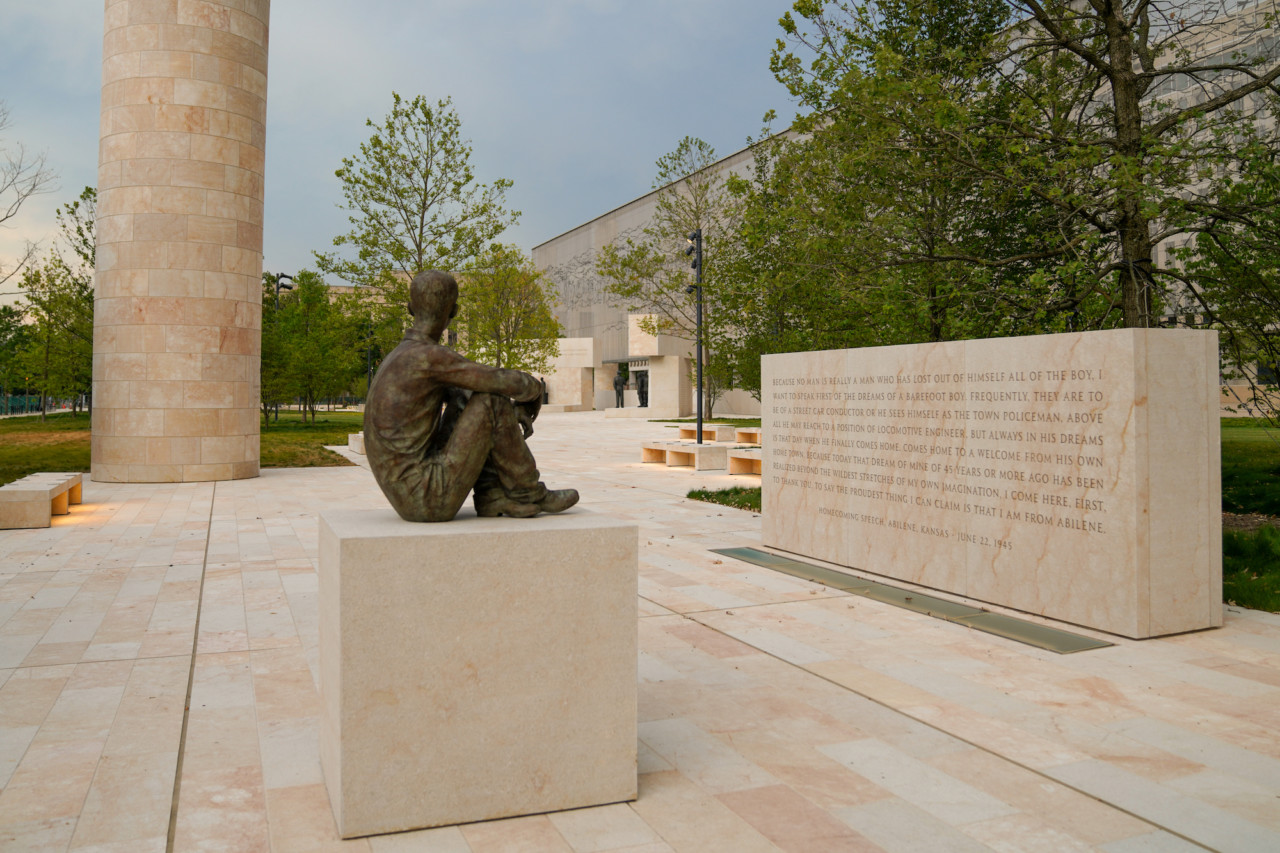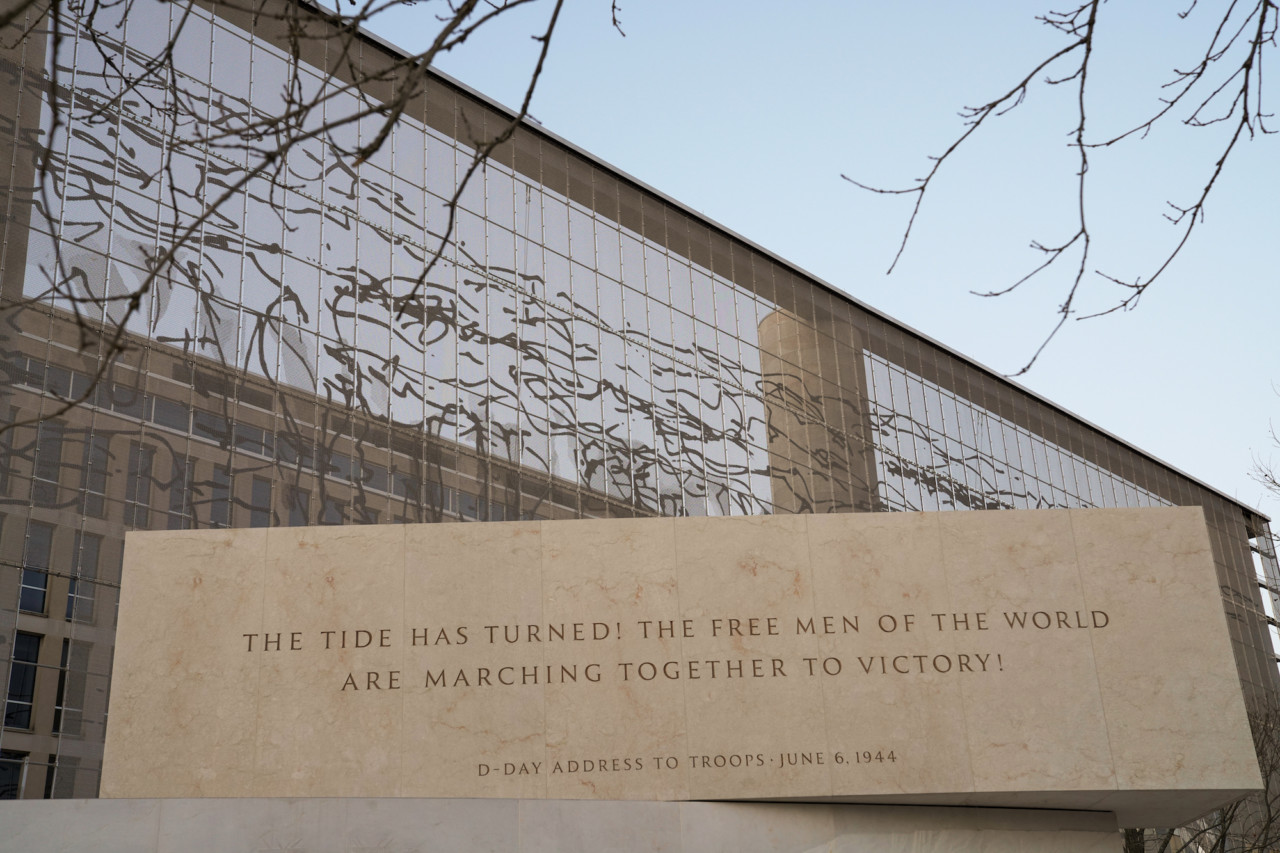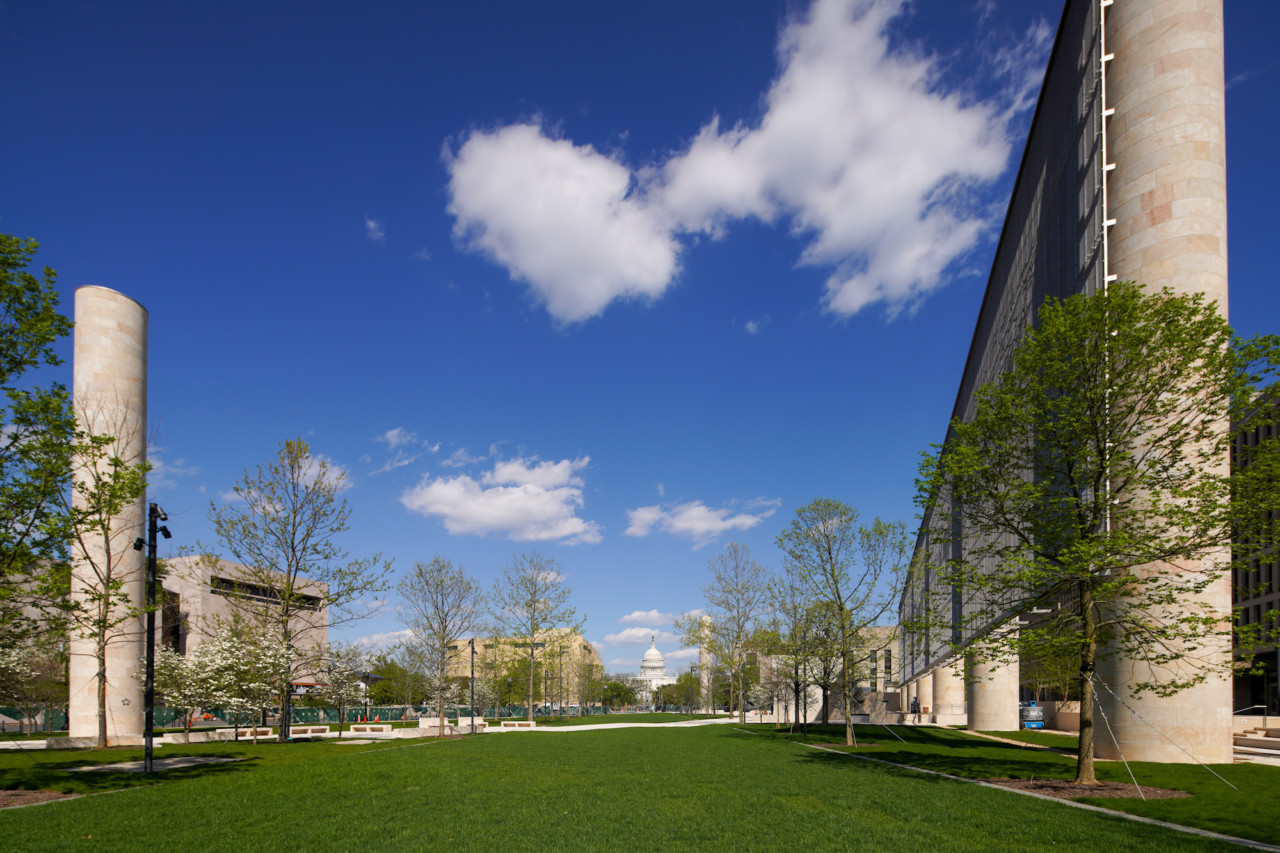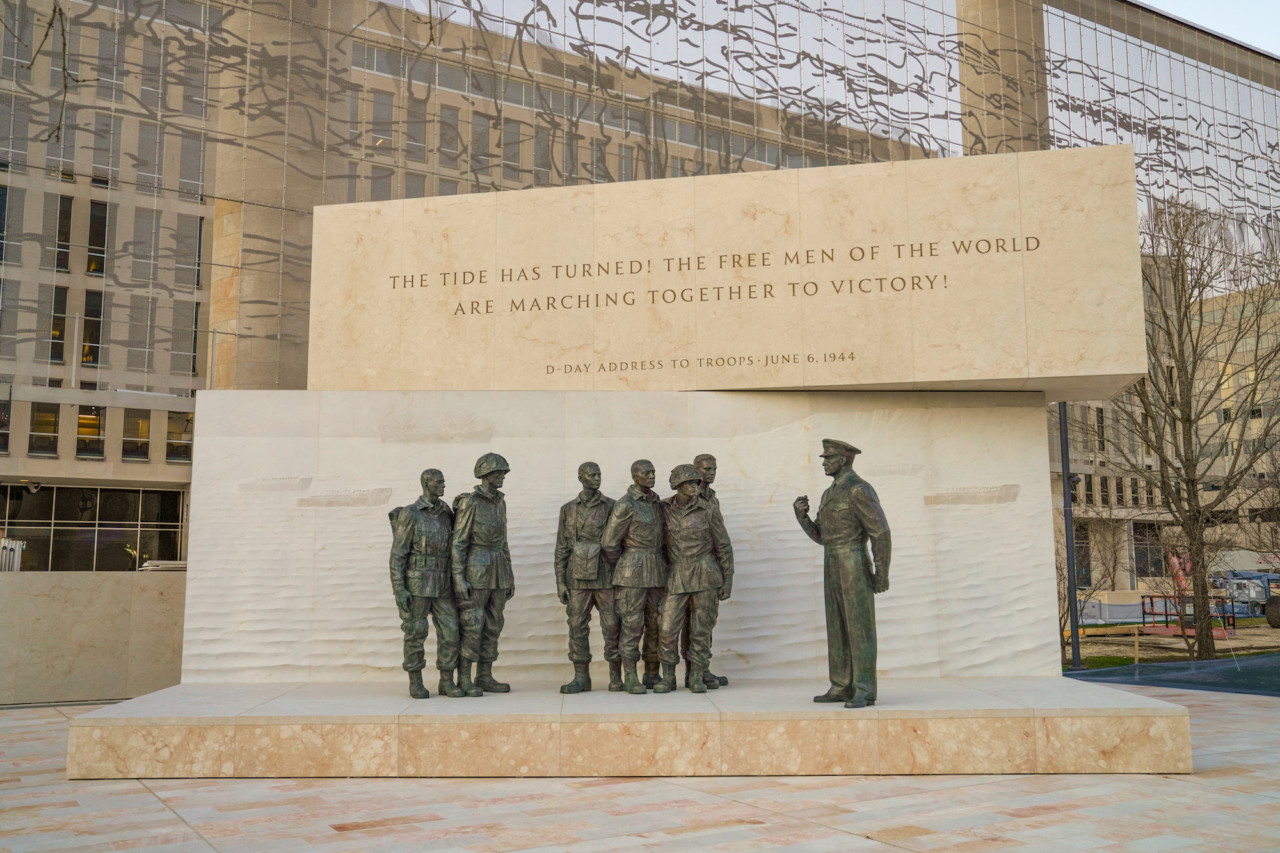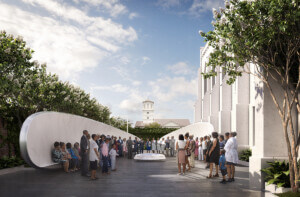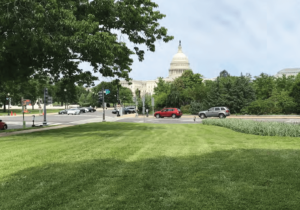After being mired in controversy for the better part of the past two decades, the twisty and turn-y saga of Frank Gehry’s Dwight D. Eisenhower Memorial in Washington, D.C., has come to an ultimate—and many would say satisfactory—conclusion. After work on the National Mall-adjacent Eisenhower Memorial wrapped up earlier this year, the four-acre tribute to the 34th President of the United States is now set to be dedicated on September 17, 2020, and officially opened to the public the following day. The memorial was originally scheduled to be dedicated on May 8—the 75th anniversary of Victory in Europe (V–E) Day—but those plans were postponed due to the COVID-19 crisis.
The site was first commissioned in 1999, with final federal design approvals from the National Capital Planning Commission coming over 15 years later in 2015 (and again in 2017) following a years-long procession of design tweaks large and small, political infighting, funding squabbles, familial objections, at least one heated campaign rallying against Gehry’s initial design, and a call for the project to be scrapped altogether. A groundbreaking ceremony was held in November 2017.
Texas-born, Kansas-raised Eisenhower, a West Point graduate who went on to serve as a highly decorated army general during World War II before ascending to the presidency as a two-term (1953–1961) Republican commander-in-chief, joins George Washington, Abraham Lincoln, Thomas Jefferson, Teddy Roosevelt, Franklin D. Roosevelt, and John F. Kennedy as the seventh former president whose life is commemorated with a memorial or monument located in the nation’s capital. It’s also Canada-born, Los Angeles-based Gehry’s first public work in Washington, D.C., and his inaugural memorial, presidential or otherwise.
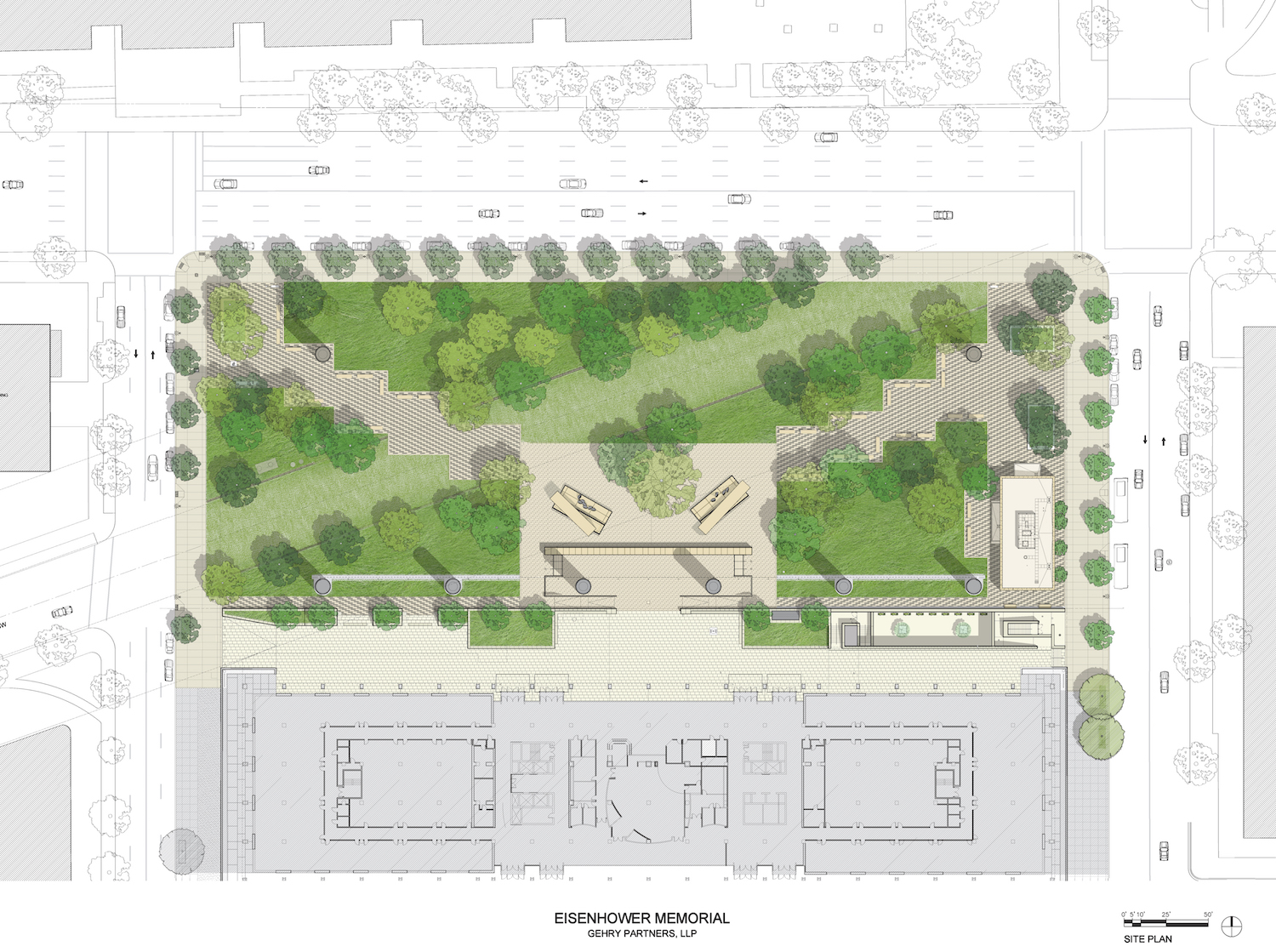
The $150 million memorial and public green space is, most appropriately, situated on Independence Avenue opposite the Smithsonian Air and Space Museum. As a fact sheet released by the Dwight D. Eisenhower Memorial Commission points out, the memorial is also in close proximity to other sites “relevant to Eisenhower’s legacy,” namely the Department of Education and the Department of Health & Human Services’ respective headquarters. (Highlights of Eisenhower’s presidency include the 1958 establishment of NASA, the signing of the Civil Rights Act of 1957, and the 1953 founding of the Department of Health, Education and Welfare, which was renamed as the Department of Health & Human Services in 1979).
As new photography released by the Commission illustrates, the memorial, functioning in part as a tree-studded place of respite amid a collection of hulking bureaucratic buildings, is comprised of two central elements. First is the “heroic-sized” bronze statuary created by esteemed Soviet Union-born sculptor Sergey Eylanbekov in close consultation with Gehry that depicts Eisenhower during three major phases of his life: As a young boy in the American Heartland, as Supreme Commander of the Allied Expeditionary Force during World War II, and, finally, as president during a tumultuous, transformative time period of American history.
The second element is a 60-foot-tall woven stainless steel “tapestry” depicting the craggy coastal cliffs of Normandy—during peacetime, of course—that frames the memorial in its entirety. Polish artist and frequent Gehry collaborator Tomas Osinksi conceived and created the innovative, abstract backdrop (initially envisioned as depicting the Kansan prairie of Eisenhower’s youth) using an artistic technique that per, the Commission, is wholly unique to the memorial.
AN will share further updates and reactions when the Eisenhower Memorial opens to the public next month.






